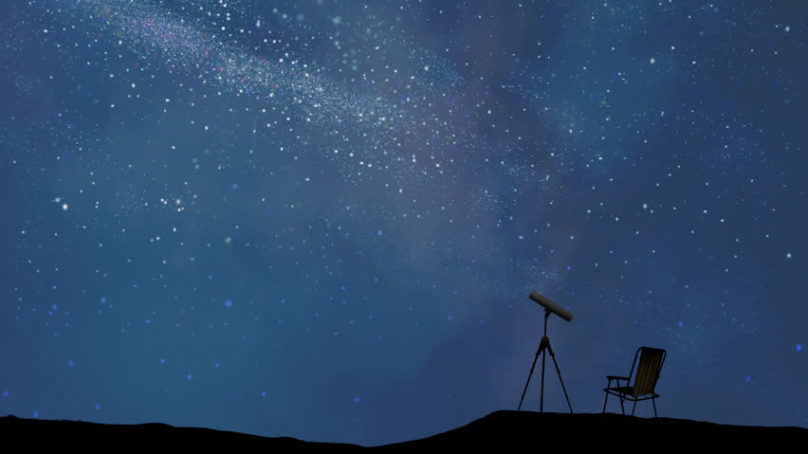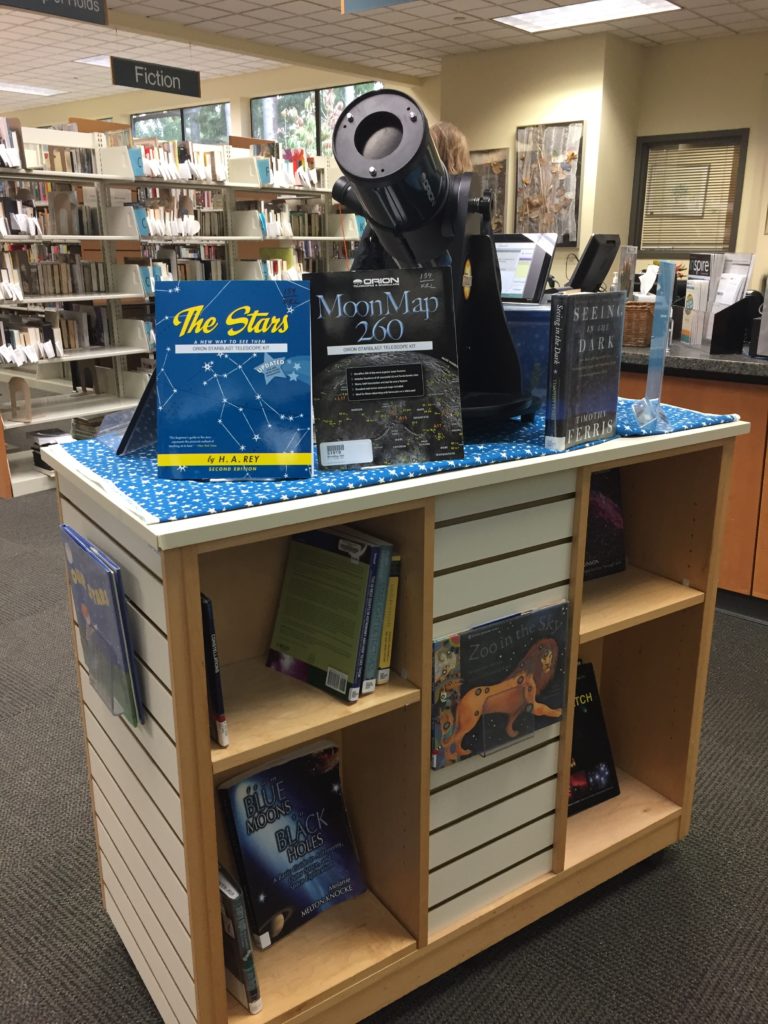
I recently checked out a telescope at my local library. Wait, what? Yes, you read that correctly. In addition to books, movies, music and online resources, my local library system checks out telescopes.
The telescope comes in a kit with all the basics to get you started gazing at the night sky. It’s very simple to set up; it took me about 10 minutes from the time I pulled into my driveway until I had the telescope set up in the backyard—and that’s without prior experience using the items in the kit.

I was able to see the moons of Jupiter, get a better look at the “Horse and Rider” double star in Big Dipper’s handle, and the views of the moon were phenomenal!
Approximately three years ago a couple of members of our local astronomy group approached me with an idea about the library lending telescopes. They read an article about the New Hampshire Astronomical Society (NHASTRO, http://nhastro.com/ltp.php) and the 100 or so libraries they inspired and supported to get telescope kits to loan to their patrons. It’s been a huge success. Our local astronomers proposed that we acquire two to three telescopes and assemble them in a padded tote with a star finder and some astronomy books.
I was intrigued. We set a date for the first of many meetings to determine how many kits to assemble, what type of telescope we wanted, what else we’d like to include in the kit, how to pay for the kits, how to maintain them.
I began my background research. I identified a dozen New Hampshire libraries which were comparable in size to our largest branches and contacted them with a list of questions about the telescope lending service. The librarians were quick to provide feedback and all felt the kits were a great addition and a positive experience for patrons and staff. Armed with information from the public libraries already in the telescope business I continued to move forward.
Determining the type of telescope was the easiest part of the project. NHASTRO has a recommendation for a telescope (Orion StarBlast 4.5-inch Astronomical Telescope) and they provide instructions for modifying the instrument so that it’s easier to use and maintain.
Next up was a discussion about what to include with the telescope. That was a much longer conversation. We brainstormed for a bit to create the initial list and then reviewed it. We opted for a very basic kit with just a few items (telescope, operator’s manual, The Stars by H.A. Rey, a Miller Planisphere starfinder, and a red flashlight to preserve night vision). Limiting the kits to a few basic items proved cheaper for us, not to mention, easier for library users.
We’re fortunate to have two active, astronomical organizations within the library’s service area and both were happy to provide maintenance and support for the library’s telescope kits. I should add that when I spoke with the librarians in New Hampshire, nearly all shared that the Orion StarBlast telescope stood up to the rigors of institutional use (one librarian used the phrase “bulletproof”) and required very little maintenance.
We decided on three kits to start with, thinking that we could add more if the service was successful. With the cost of the tote added to the price list for the rest of the kit’s contents we were estimating $300 per kit. If we asked for $1000 that would give us enough for the three kits and leave a little for the cost of maintaining them. Next step: find a funding source.
Some of the New Hampshire libraries were funded by their local astronomy groups, some were funded by their Friends of the Library groups, a few used library collection dollars to acquire their kits, and some just relied on donations. Funding was going to be our biggest challenge. We considered applying to grant sources on the national level, but we have a few local organizations providing grant funding to local non-profits. Given the perceived competition on the national level we opted for local funding and began preparing the grants.
The president of one local astronomy group won an Orion StarBlast 4.5-inch Astronomical Telescope in a raffle, which he donated to the cause, while the president of the other local astronomy group wrote the grants. The grantors were intrigued by the idea, and asked if we’d do a presentation. I accompanied the astronomy group president, we presented, and they funded the project.
Once we got the funds it took less than a week to acquire the kit’s contents, another few days were needed to modify the telescopes according to NHASTRO specs, then the labeling and cataloging of the kits took another week. The entire process from initial meeting to the first check out took approximately three years. Our project took considerably longer than other systems, but we wanted to be thorough, and we had to wait for the grant cycle.
As I type there are 62 reservations on our three telescope kits so now I’m looking into the possibility of securing funding for three more kits. Let me know if you’d like to contribute!
About the Author
I grew up in a sleepy, little fishing village in Northern New England. For two decades I worked in the maritime industry, eventually attaining the position of captain. In the late ’90s I made some changes to spend more time with my family. I enrolled in the library school at the University of Washington. Upon graduation I was hired by Kitsap Regional Library to buy movies and music. I managed the Silverdale Branch, managed the Collection Development department, and now work as a reference librarian at the Bainbridge Branch of the Kitsap Regional Library. And I have the best job in the world!



